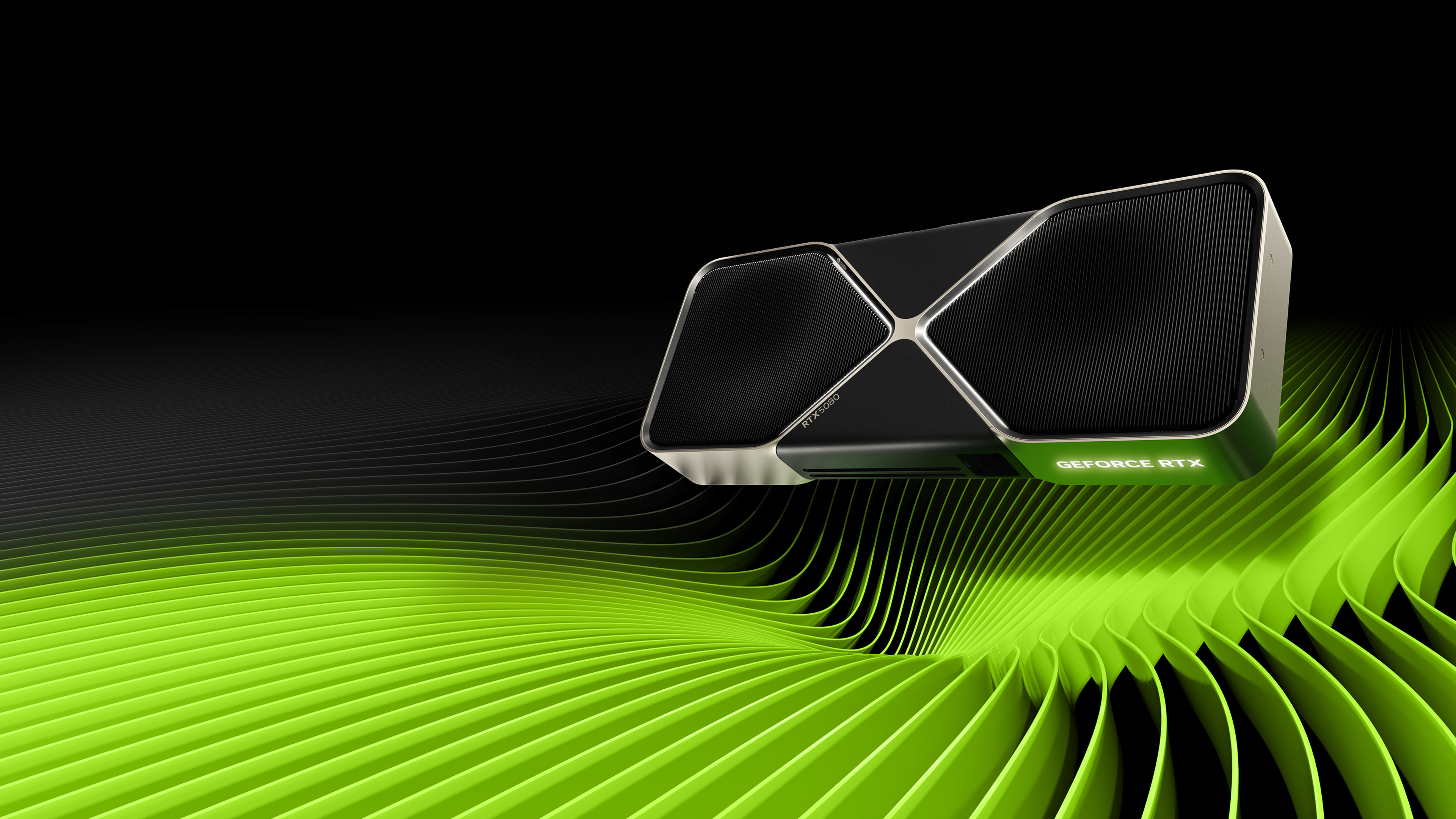RTX 5080 Super rumored with 24GB of memory — Same 10,752 CUDA cores as the vanilla variant with a 400W+ TGP

New, possible details about a potential RTX 5080 Super have emerged, thanks to an X posting from well-reputed hardware leaker Kopite, who has a solid track record when it comes to all things Nvidia. The RTX 5080 Super is alleged to address GPU memory limitations with 24GB of fast GDDR7 memory, and a TGP (Total Graphics Power) that's rumored to exceed 400W. The leaker has not shared any details in regards to pricing and availability.
GDDR7 memory modules are currently available in 16Gb (2GB) and 24Gb (3GB) densities, with even higher capacities down the pipeline. The denser option directly translates to a 50% increase in VRAM capacity, even if the memory bus width remains the same.
Despite sharing the same 256-bit bus width as the RTX 5080, the RTX 5090 Mobile achieves its 24GB configuration with denser memory modules. The remainder of the Blackwell family sticks with standard 16Gb modules, similar to GDDR6X. However, this new leak suggests Nvidia might be eying transitioning to denser 24Gb options for the RTX 50 Super refresh.
The RTX 5080 Super reportedly employs the full-fat GB203 die, similar to the RTX 5080, with 10,752 CUDA cores or 84 Streaming Multiprocessors. The 256-bit interface enables eight memory modules, which have been populated with 24Gb (3GB) modules for 24GB of GDDR7 memory, rated at 32 Gbps. This puts the memory bandwidth at an impressive 1 TB/s, or 6.6% faster than the stock RTX 5080. Nvidia is also said to increase the power requirements for the RTX 5080 Super over 400W.
GPU | Die | CUDA Cores | SMs | Bus-Width | VRAM | Bandwidth |
|---|---|---|---|---|---|---|
RTX 5090 | GB202 | 21760 | 170/192 | 512-bit | 32GB | 1792 GB/s |
RTX 5080 Super | GB203 | 10752 | 84/84 | 256-bit | 24GB | 1024 GB/s |
RTX 5080 | GB203 | 10752 | 84/84 | 256-bit | 16GB | 960 GB/s |
RTX 5070 Ti | GB203 | 8960 | 70/84 | 256-bit | 16GB | 896 GB/s |
RTX 5070 | GB205 | 6144 | 48/50 | 192-bit | 12GB | 672 GB/s |
RTX 5060 Ti | GB206 | 4352 | 34/36 | 128-bit | 8GB | 448 GB/s |
RTX 5060 Ti | GB206 | 4352 | 34/36 | 128-bit | 8GB | 448 GB/s |
RTX 5060 | GB206 | 3840 | 30/36 | 128-bit | 8GB | 448 GB/s |
It's improbable Nvidia will release a Super/Ti model for the premier RTX 5090 with 24Gb modules, as that would likely impact the sales of its professional GPUs. The most affordable Blackwell workstation card, the RTX Pro 4000 Blackwell, which is suggested to retail near $1,500, is equipped with 24GB of memory. This 24GB capacity is likely the maximum Nvidia will offer with its Super refresh for consumers, as going any further would risk encroaching on its distinct market segmentation, where higher VRAM capacities are key selling points for AI/ML developers and enthusiasts.
The RTX Pro 4000 also serves as a reasonable indicator for the price tag, where the RTX 5080 Super should cost somewhere between $1,000 to $1,500, assuming the MSRP is honored. The best possible outcome would be to pull an RTX 4080 Super and decrease the base MSRP, but that's wishful thinking, especially in a market where MSRPs are no more than a suggestion.
At the other end of the spectrum, all 128-bit models, which constitute the entire RTX 5060 family, have the potential to be loaded with up to 12GB of memory. But the final decision rests on Nvidia, which has recently been in hot water for restricting preview drivers from reviewers and limiting pre-release tests to very specific benchmarks, unduly focused on Multi Frame Generation.
Get Tom's Hardware's best news and in-depth reviews, straight to your inbox.
Follow Tom's Hardware on Google News to get our up-to-date news, analysis, and reviews in your feeds. Make sure to click the Follow button.

Hassam Nasir is a die-hard hardware enthusiast with years of experience as a tech editor and writer, focusing on detailed CPU comparisons and general hardware news. When he’s not working, you’ll find him bending tubes for his ever-evolving custom water-loop gaming rig or benchmarking the latest CPUs and GPUs just for fun.
-
JTWrenn Starting to wonder if for gaming the speed increases are just not as important as the size of the VRAM at this point. There has to be a cross section where bandwidth matters less than storage based on the scenes/area loaded. Sure you can stream in faster, but I am starting to feel like if they went for more ram and older gens we would see better results. Like would a 24GB gddr6 setup on a 5080 beat a 16GB gddr7 setup? I mean from what I can tell the bandwidth difference is only 16GBPS (1024-1008) between a 5080 super and 4090. Could they do it cheaper but better by not going up gens so fast?Reply
Hard to find anything more than guesses on it, but I feel like if they stuck with gddr6 for longer we would get more out of it. Think pace of memory standards vs it's actual gains are out of whack right now. -
hotaru251 Reply
not to nvidia.JTWrenn said:but I feel like if they stuck with gddr6 for longer we would get more out of it.
They are "ai everything".
"ai" LOVES speedy memory (where it lives).
Thus they will push faster ram any time they can.
and im not sure of the 80 tier, but the improvement of the 60/70 tier from 40 series is mostly from the faster memory. -
Elusive Ruse I wouldn’t call it a Super variant if the CUDA cores remain the same and only the VRAM amount changes. We already have 5060Ti with different VRAM configurations.Reply -
UWguy The 5080 super will beat a 4090 in games with DLSS4.Reply
4090 prices have already started to fall and should fall further with this release. -
Pierce2623 80 tier should top out 250w and 90 tier 350w. They could EASILY still get 90% of the performance too, if they tuned it around those TDP.Reply -
atomicWAR Reply
I don't know that I would call that "beat" when they'll still need to use MFG to do it. If you take frame gen out of the equation, which I absolutely do in real life anytime I can as I prefer not use it do to its well know side effects... They can't feasibly clock a 5080 high enough to bridge that gap, regardless of VRAM config.UWguy said:The 5080 super will beat a 4090 in games with DLSS4.
4090 prices have already started to fall and should fall further with this release.
I agree with @hotaru251 that a 5080 should have come with 24 GB to start and @Elusive Ruse that without a core count increase, this should not be called a super card. It should be treated like the 5060Ti series and just be a RTX 5080 24GB. -
Pierce2623 Reply
Using 3-4 times the amount of fake frames isn’t “beating” a 4090. The only true beating is when using the exact same settings. With equal settings and no CPU bottleneck, a 4090 easily beats a 5080 super. It’ll be 5% faster than a 5080 which is 8-10% faster than a 4080 super, when the 4090 is known to be 30% faster than 4080 super….UWguy said:The 5080 super will beat a 4090 in games with DLSS4.
4090 prices have already started to fall and should fall further with this release. -
valthuer ReplyUWguy said:The 5080 super will beat a 4090 in games with DLSS4.
4090 prices have already started to fall and should fall further with this release.
Problem with 4090, is that it's been MIA for months.
You can only find it in the used market. -
AngelusF Reply
The GB203 was already maxed out on the vanilla 5080 so there was no possibility of having more CUDA cores, but the memory bandwidth has increased too, not just the size and apparently it will be also be factory-overclocked to the max. Anyway, I don't really care what they call it, this looks like my next card as it gives me a decent upgrade from my current one and unlike the 5090 I might actually be able to justify the cost.Elusive Ruse said:I wouldn’t call it a Super variant if the CUDA cores remain the same and only the VRAM amount changes.